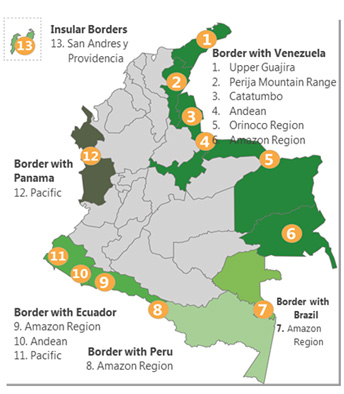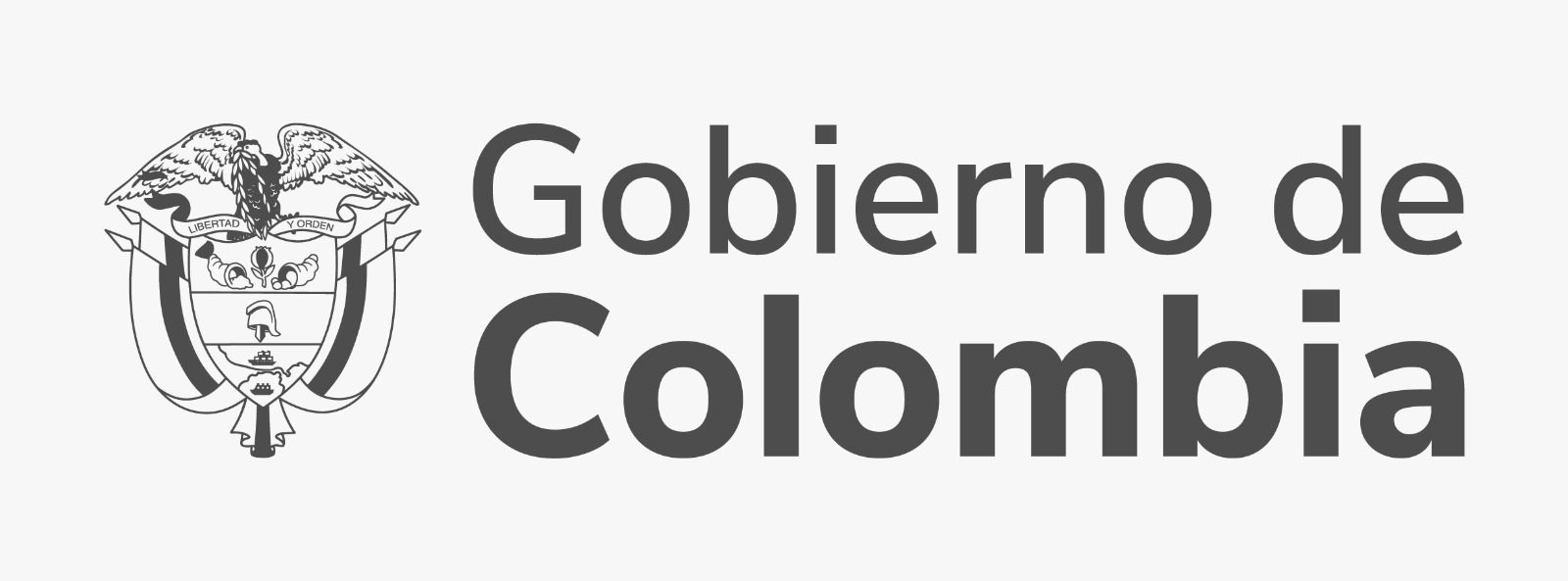The Borders for Prosperity Plan methodology includes the design of differential public policies for different borders. T this end, the land borders were classified according to their natural regions and location with respect to the neighbor country in order to design social development programs to promote their integration.
Each subregion is made up of municipalities and villages defined as border towns. The 13 border subregions were classified as follows:
Border Subregions

An inter-institutional commission will be set up in each subregion, with participation by the public sector at the national, regional and local levels, the private sector, the third sector and multilateral cooperation agencies. Each commission will design its public policy, programs and social projects, and will be in charge of monitoring performance progress.
Differential ethnic components will also be taken into consideration. Subcommissions will be created to work on specific situations related to Afro-descendant and Indigenous populations.
Phases
The following are the PFP execution phases for each border subregion:
- I Identification of players: Any additional players identified in the course of the PFP will be invited to share their experience in specific areas or their knowledge of local conditions.
- II Social evaluation: The players, in particular the local ones, who are familiar with the realities and main social problems, will set priorities on a differential basis for each border subregion.
- III Establishment of lines of action: Lines of action will be established on the basis of the most pressing problems identified. This process will also include participative methodological exercises on a differential basis.
- IV Project formulation: The participating players and additional contributors may formulate and present social development projects, in accordance with the established lines of action. The formulation must include progress measurement indicators and the design of sustainability schemes.
- V Technical evaluation of projects: The projects will be evaluated by the government entities with jurisdiction on each relevant area; the assessment must include technical, financial and legal feasibility of the projects.
- VI Applying for and securing funds: Funds will be applied for and obtained through the budgets of National Government entities, from private sector entities for corporate social responsibility issues, resources from cooperating agencies and states, and co-financing resources from local government entities.
- VII Prior Consultation and socialization processes for programs and projects: Project socialization strategies with the border communities must be designed and implemented.
- VIII Formalization of agreements: All relevant legal agreements must have been formalized prior to the execution of any programs or projects. Any contracts and agreements to be entered into must be in agreement with the Law.
- IX Execution and follow-up: The players will be responsible for monitoring execution of the projects. In addition, organized local communities and local authorities shall carry out community oversight reviews as guarantors of the project.
-
X Implementation of sustainability schemes: Implementation of sustainability schemes must include program operation, maintenance and management , quantification of expense flows and identification of permanent financing sources over time. The players will be responsible for the follow-up of this phase.
- XI PFP assessment: Upon termination of the public policy cycle of the plan, it is advisable to make an assessment of its execution, impacts, main accomplishments, sound practices and lessons to be learned. This process will strengthen the Borders for Prosperity Plan for execution of second-generation programs and projects.












